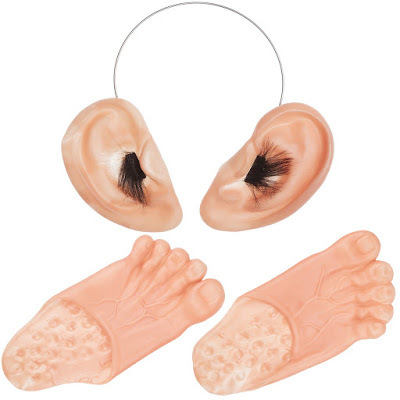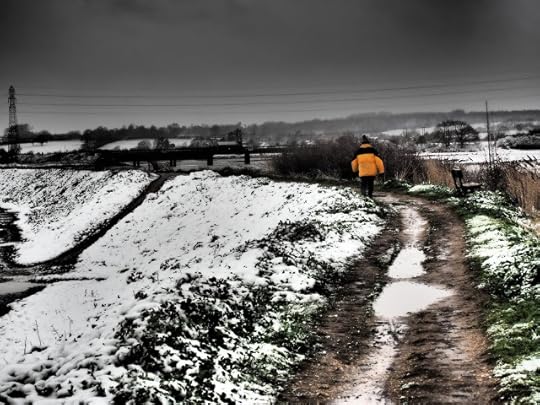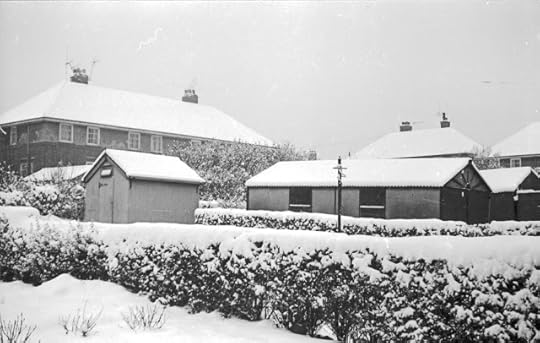Geoff Nicholson's Blog, page 22
March 19, 2021
THE MUSHROOM WALK
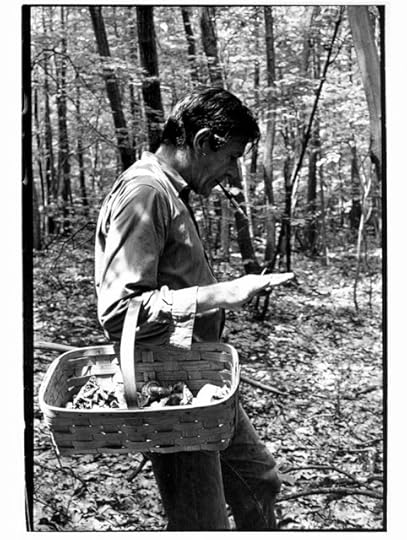
Having recently had a birthday, I decided to spoil myself, and so I bought a copy of John Cage: A Mycological Foray: Variations on Mushrooms.
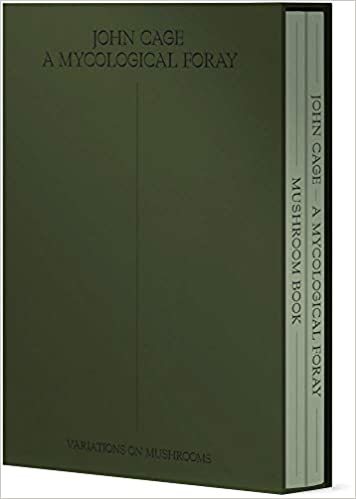
It’s a two volume set, one of them a kind of scrapbook about Cage and his mushroom interests, with photographs of him, often walking in the woods collecting fungi, also pictures of some of the mushroom-related things he collected. Also the text of Mushrooms et Varitiones, which is frankly very hard work.
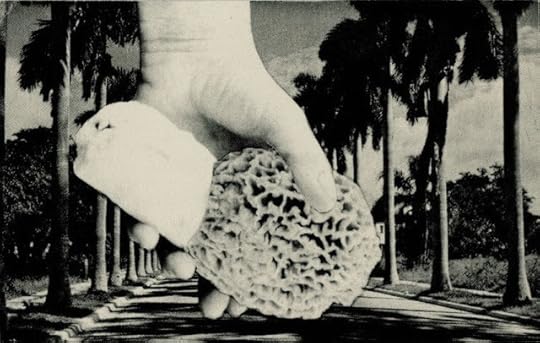
The other ‘volume’ is a reproduction of The Mushroom Book, a legendary limited edition that he did in the early 70s with Lois Long, illustrator, and Alexander H. Smith, botanist. It’s not so much a book as a set of unbound lithographs, with some more abstruse Cage texts.

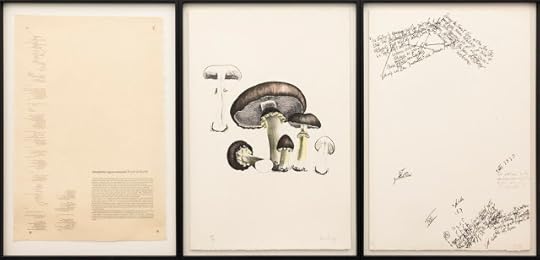
Together they make a fine thing, and I do fear spilling coffee or red wine or even mushroom ketchup over them. Cage had his own mushroom ketchup recipe: you probably knew that.
Of course, I was not surprised to find that Cage was a walker, especially in the woods, especially looking for mushrooms, but one thing I didn’t know was that he suffered from arthiritis. I feel his pain, as well as my own. That was why he adopted a Macrobiotic diet to help cure it. It probably worked as well as anything else does. (Don't get me started).
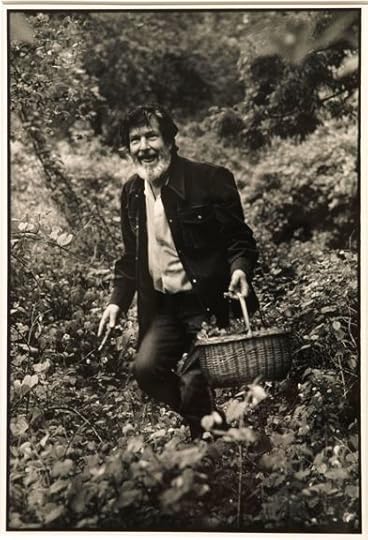
There’s also a partial transcript of a 1983 interview Cage did on Canadian radio, in which the interviewer is trying to get him to talk about 'sacred' mushrooms. He didn’t have much time for that. He said, ‘I don’t think in those terms. Nothing is more sacred than any other thing. We should wash our dishes and brush our teeth and forget about one thing being sacred and another thing not.
‘I don’t have a favorite mushroom – I just like the one I have.”
This guy was GOOD!!
As for me, I continue to walk, often with a more or less painful arthritic knee, and lately as I walk, I look at mushrooms, photograph them, and then when I get home, using a couple of books and an online source or two, with much hesitation and head scratching, I try to identify them.
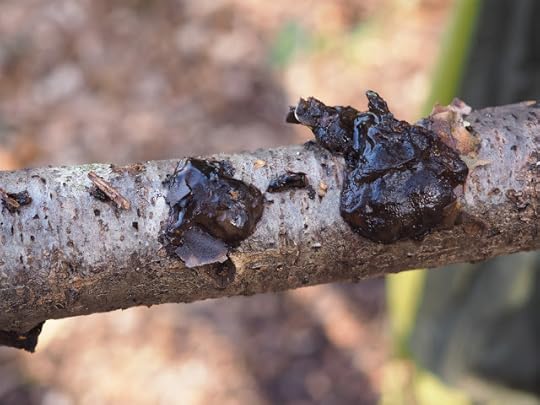
The one above, I believe, is Exidia glandulosa (though it could be Exidia plana), black jelly fungus, sometimes declared to be edible, but you wouldn’t, would you?
Of course I wouldn’t need to do all this research if John Cage was walking with me. And you know sometimes, in a sense, he is.

March 16, 2021
WALKING WITH WARNINGS
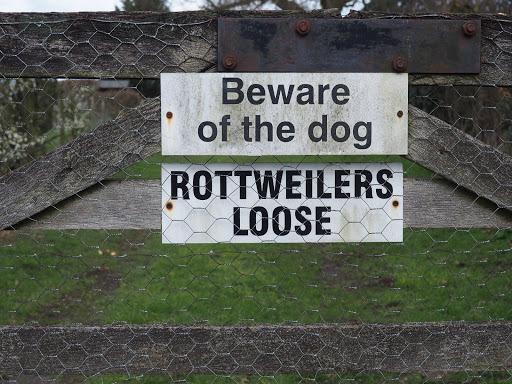
Look, I've got nothing against dogs, just so long as they’ve got nothing against me.
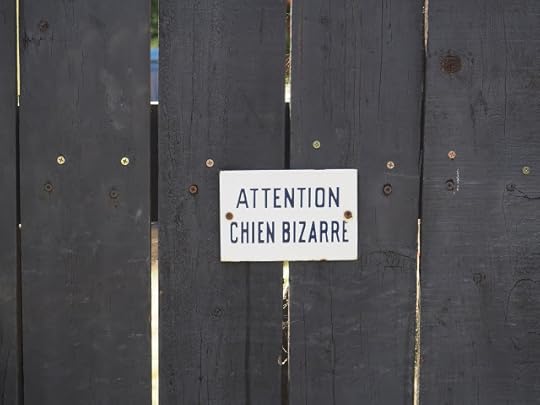
But currently I’m doing most of my walking in more or less rural Essex, and I regularly encounter some unfettered hound that bounces up and sniffs me, pursued by its owner who says to me, ‘Oh, he may look like something that should be poking around in Grimpen Mire but he’s really just a bit softy.’
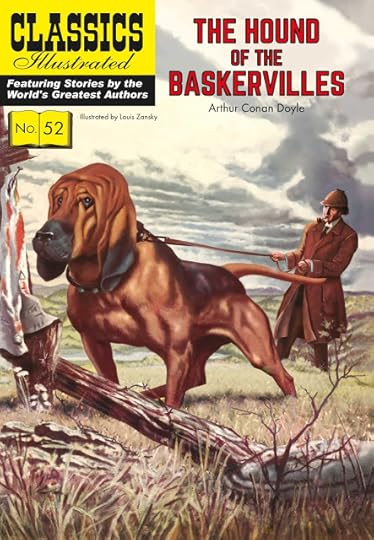
Meanwhile I continue to collect ‘beware of the dog' signs and here are a few
(comparatively) recent ones.

Are there really dogs behind these signs or are they just to scare aware intruders? In most cases I have have no idea. As our pal Roland Barthes would say, ‘language is never innocent.’

March 9, 2021
BABYLONIAN CARNIVAL WALKING
Look, I know you can’t judge a book by its cover, and maybe even less by its title, but
when you see a book titled It Walks By Night and it has an obelisk on the cover, then
given my range of interests, it seems like a book that should be read. So I read it. It's by
John Dickson Carr.
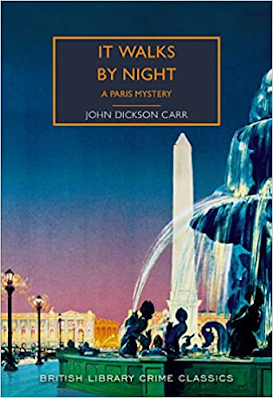
Spoiler alert: the plot is so preposterous, involving a ‘locked room,’ plastic surgery, decapitation, opium, and one of the characters attempting to live out the plot Poe’s ‘The Cask of Amontillado,’ that I pretty much gave up trying to understand it. Suffice to say there is no obelisk in the book, and precious few mentions of walking, unless you include passages like this one, describing Inspector Bencolin, the hot shot Parisian detective:
‘In his hands a thousand facets came glittering out of the revolving jewel of Paris – lights and shadows, perfume and danger – the salon, the greenroom, the pits – abbey, brothel, and guillotine, a Babylonian carnival through which he walked in the name of the prefecture.’
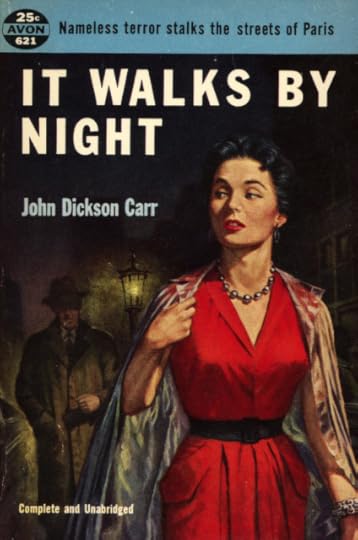
No one ever accused this book of being underwritten.
And here on the last page is the heroine/murderess’s final utterance in the book: note, she has been indulging in marijuana cigarettes.
‘When I smoke one of those – I don’t know why – I am capable of anything. I took a taxi. I came up to the villa by the back gate, and when I came in by the back gate, he was standing there … I struck him. I hacked him – I was bathed in his blood. I liked that!’ Pity she didn’t just go for a walk, with friends, and a map:

March 6, 2021
DANCES WITH DAFFS
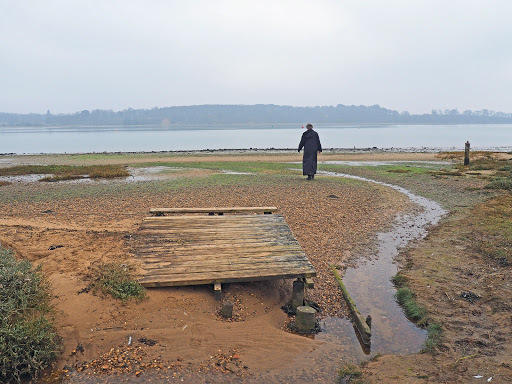
It being the beginning of March I found myself walking in Suffolk, at the very southern
edge, along the river Orwell, in Pin Mill and Shotley Gate.
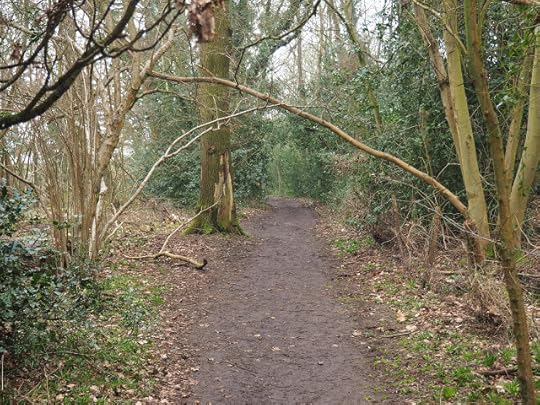
The first bit of the walk – in fact on a patch of land belonging to the National Trust - was suitably woody and bucolic. Along the way I came across these – and have even managed to identify them – Daldinia concentrica:
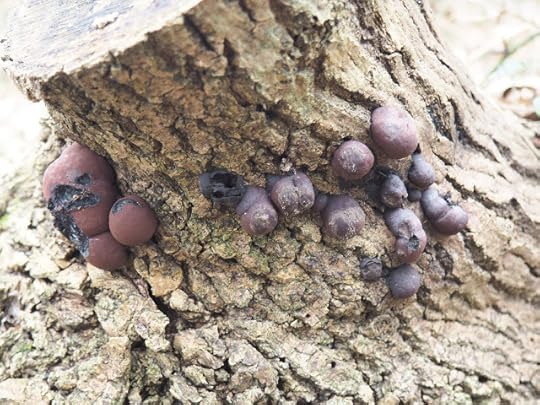
They’re not edible, and not in the least psychotropic. In fact and the reference works say they make ‘great kindling’ which seems rather a waste of a mushroom even if it’s not edible.
The second part of the walk was more or less industrial looking out from Shotley at Felixstowe which I gather is often very much busier than this:
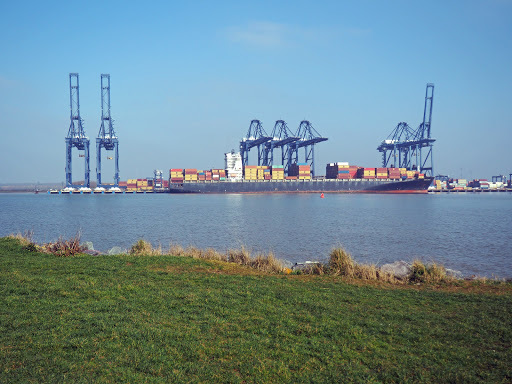
And I was thinking about Pauline Oliveros and her notion of deep listening. In the woods there were a lot of bird sounds – most of which I couldn’t identify though I’m pretty sure I heard a woodpecker. There was also some distant droning, either from something on the river or traffic the A12 which wasn’t a million miles away.
This is Pauline Oliveros, apparently in some woods:
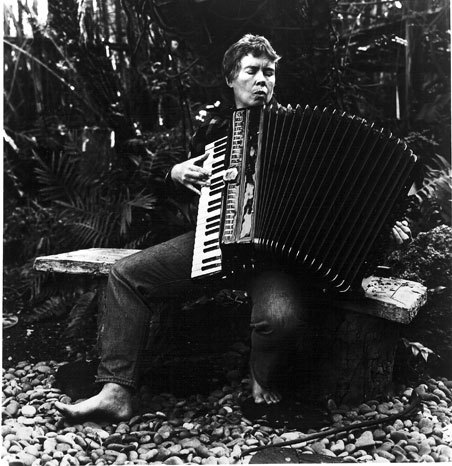
Shotley probably had some sounds of lapping water but mostly there was noise from the tankers being loaded and unloaded across the way: deep thuds and the occasional metallic clunk.
In both places there were daffodils – these near Pin Mill

these at Shotley – I am very fond of plants in tyres:
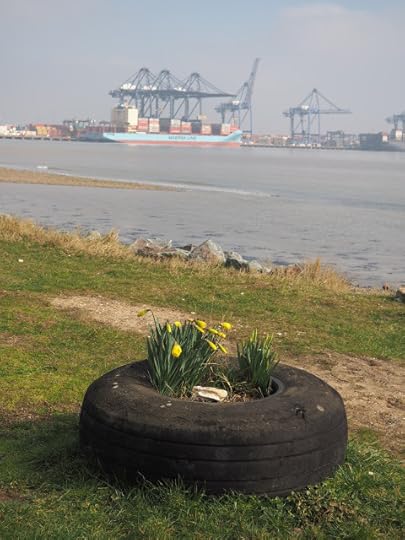
Of course I thought of the Wordsworths. Interestingly, or not, it was evidently much later than the beginning of March when William floated on high (or in fact walked) and saw the daffs that inspired his poem. Sister Dorothy was with him of course, and she wrote about it in her journal of April 15th(1802). There may have been a delay before she wrote about it, but surely not a month and a half. On the other hand, by his own account, it took William a couple of years to get round to writing the poem.
Dorothy wrote, ‘When we were in the woods beyond Gowbarrow park we saw a few daffodils close to the water side. We fancied that the lake had floated the seeds ashore and that the little colony had so sprung up. But as we went along there were more and yet more and at last under the boughs of the trees, we saw that there was a long belt of them along the shore, about the breadth of a country turnpike road.’
You know, I’m quite naïve in matters of daffodil reproduction. I always imagined the bulbs proliferated underground. The idea that seeds floated ashore was quite a new idea to me.
This is a picture of Dorothy and William from Look and Learn magazine. Dorothy seems amazingly happy with that rake.
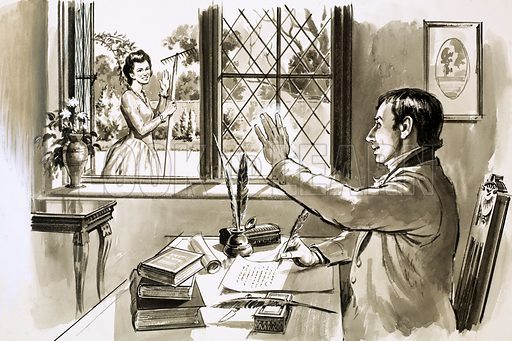

DANCES WITH DAFFODILS
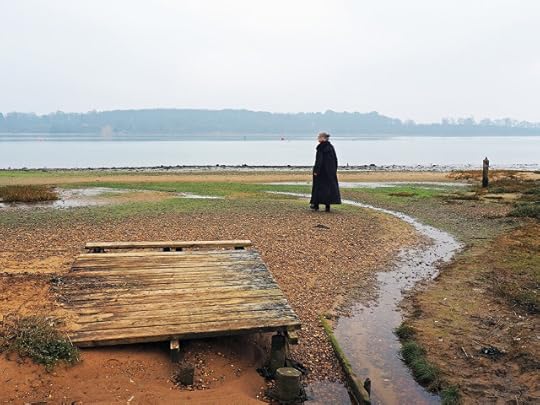
It being the beginning of March I found myself walking in Suffolk, at the very southern
edge, along the river Orwell, in Pin Mill and Shotley Gate.

The first bit of the walk – in fact on a patch of land belonging to the National Trust - was suitably woody and bucolic. Along the way I came across these – and have even managed to identify them – Daldinia concentrica:

They’re not edible, and not in the least psychotropic. In fact and the reference works say they make ‘great kindling’ which seems rather a waste of a mushroom even if it’s not edible.
The second part of the walk was more or less industrial looking out from Shotley at Felixstowe which I gather is often very much busier than this:

And I was thinking about Pauline Oliveros and her notion of deep listening. In the woods there were a lot of bird sounds – most of which I couldn’t identify though I’m pretty sure I heard a woodpecker. There was also some distant droning, either from something on the river or traffic the A12 which wasn’t a million miles away.
This is Pauline Oliveros, apparently in some woods:

Shotley probably had some sounds of lapping water but mostly there was noise from the tankers being loaded and unloaded across the way: deep thuds and the occasional metallic clunk.
In both places there were daffodils – these near Pin Mill

these at Shotley – I am very fond of plants in tyres:

Of course I thought of the Wordsworths. Interestingly, or not, it was evidently much later than the beginning of March when William floated on high (or in fact walked) and saw the daffs that inspired his poem. Sister Dorothy was with him of course, and she wrote about it in her journal of April 15th(1802). There may have been a delay before she wrote about it, but surely not a month and a half. On the other hand, by his own account, it took William a couple of years to get round to writing the poem.
Dorothy wrote, ‘When we were in the woods beyond Gowbarrow park we saw a few daffodils close to the water side. We fancied that the lake had floated the seeds ashore and that the little colony had so sprung up. But as we went along there were more and yet more and at last under the boughs of the trees, we saw that there was a long belt of them along the shore, about the breadth of a country turnpike road.’
You know, I’m quite naïve in matters of daffodil reproduction. I always imagined the bulbs proliferated underground. The idea that seeds floated ashore was quite a new idea to me.
This is a picture of Dorothy and William from Look and Learn magazine. Dorothy seems amazingly happy with that rake.


March 1, 2021
AURAL WALKING
There’s a line by Pauline Oliveros, the avant-garde musician, composer and theorist, that gets quoted surprising often. It runs “Take a walk at night. Walk so silently that the bottoms of your feet become ears.”
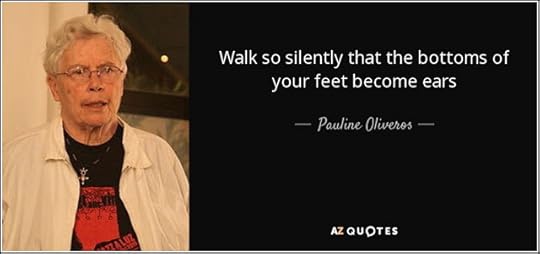
In fact it’s one of Oliveros listening exercises, titled 'Native' from her small volume Sonic Meditations.
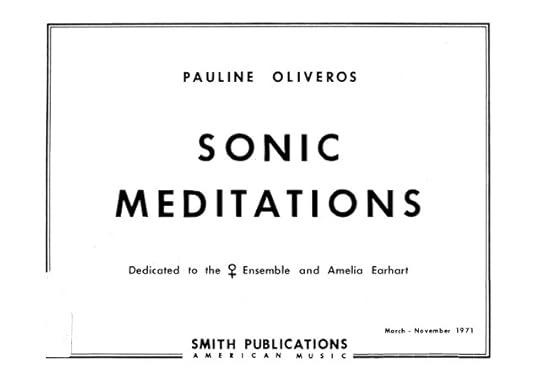
To be fair Oliveros was more concerned with listening than walking. In fact she was more concerned with listening than just about anything else, an advocate of ‘Deep Listening’. And yes OK, I get that the piece is no doubt metaphoric, but I’ve been thinking how weirdit would be if the bottoms of my feet became ears.
I mean they’d be inside my socks and inside my shoes: they wouldn’t hear much of anything. And if you say, as some people do, that it’s always best to walk barefoot, well that’d be even worse, wouldn’t it? These new ears would be constantly pressed hard against the ground. They might hear things in a new way but you wouldn’t have to walk very far before they got really, really sore.


February 23, 2021
WALKING OUT OF MY HEAD

If you’ve been watching Adam Curtis’s multi-part documentary I Can’t Get You Out Of My
(and if not, why not?) you may have been reminded, or minded for the first time, of
Eduard (sometimes Edward) Limonov.
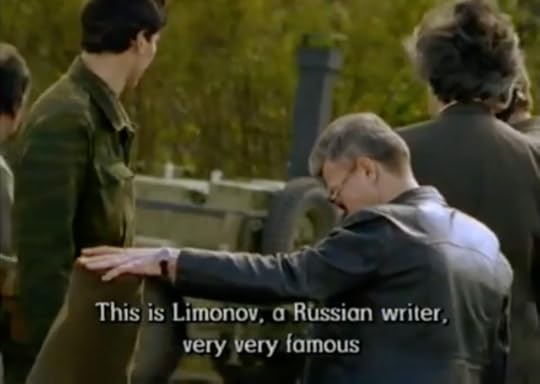
He was a Russian poet, novelist, memoirist, newspaper editor, and a dissident, although his dissent was not of the standard anti-Soviet kind that went down so well in the United States, to which he moved in 1974. He was also a politician, though his politics were all over the place. He was (almost certainly unjustly) charged in Russia with terrorism and spent two years in jail. He also seemed to be – and this may have been the final nail in his political coffin - a pal of war criminal Radovan Karadzic (not a good look).
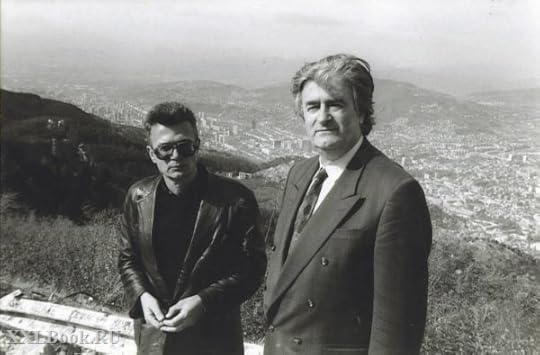
Limonov’s appearance in the Curtis film shows him with Karadzic, apparently firing a machine gun towards the besieged city of Sarajevo (an even worse look), though Limonov claimed he was a victim of creative editing, and was in fact just shooting at a target.
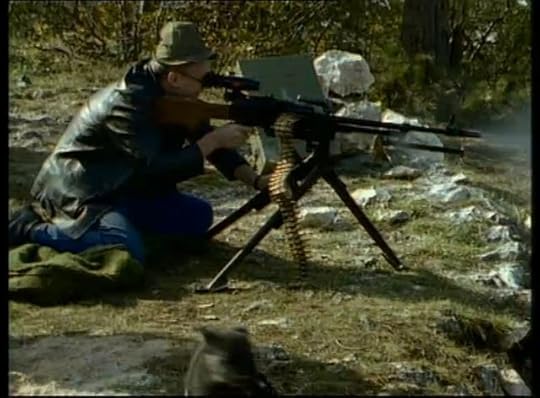
As a writer Limonov is probably best known for It’s Me, Eddie, a ‘fictional memoir’ about his life in New York in the mid to late 70s - hence the Ramones t-shirt below, I suppose (though I can't swear this is in New York)
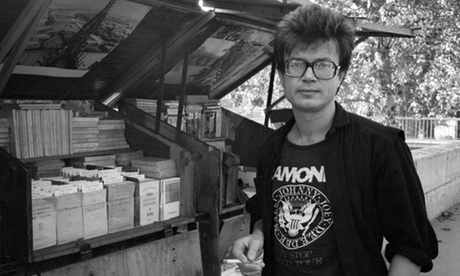
Also, sometimes he did a Saturday Night Fever thing, which again is not a good look.
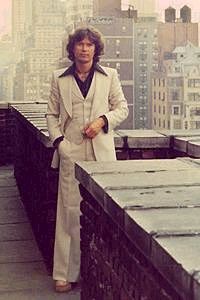
If the book’s to be believed he (and/or his fictional protagonist) did an awful lot of walking in New York, at a time when it wasn’t the safest city in the world, which is why he’s here in this blog.
He writes, “All I was doing was sitting, lying, smoking, drinking from a bottle in a paper bag, sleeping in the street. I would go two or three weeks bumming around New York on foot, sometimes walking two hundred and fifty blocks a day, bumming around in neighborhoods both dangerous and safe, without talking to anyone.”
There are about 20 blocks in a miles (depending on the block) so that’s about 12 and a half miles. Quite impressive. Then he upped his game.
“I once covered more than three hundred blocks in one day, on foot. Why? I was out for a walk. I generally go almost everywhere on foot. Out of my $278 a month I begrudge spending fifty cents to ride anywhere, especially since my sorties have no set destination, or the destination is indefinite. For example, a place to buy myself a notebook of a particular format. They don't have it at Woolworth's or at another Woolworth's or at Alexander's, and I march down to the sidewalk markets on Canal Street to scrounge up the right notebook. All other formats irritate me.
“I am very fond of tramping around. Really, without exaggeration, I probably walk more than anybody else in New York. Unless there's some tramp who walks more than I do, but I doubt it. So far as I can see, bums are all immobile, more apt to lie still or putter sluggishly about in their rags.”
There’s a lot of this in the book, also a certain amount of talk about ‘pederasty’ – he was in favour of it.

For some of his time in New York he lived in the Winslow Hotel on 55thStreet and Madison Avenue. In 1982 the building was turned into an office block, with shops on the ground floor. One of the shops, at least before Covid, was The Walking Company, just a shoe shop, but for some of us a reminder of the walking contradiction that was Eduard Limonov.
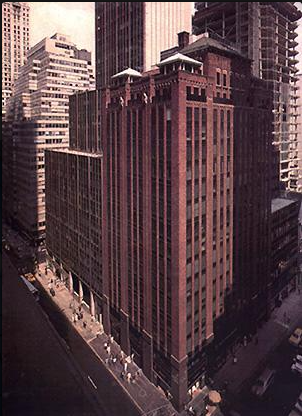


February 12, 2021
GRAVITY'S SUBURB
I’ve been working on, and have very nearly finished, a book about Suburbia. Before and between lockdowns I made a few expeditions, you might call them field trips, to various suburbs in England. Most of this material will find its way into the book, but inevitably some of it ended up on the editing room floor. Not being a man to waste effort or words, I thought I’d use a bit of it here, in much edited form.
Here’s a description of a visit I made with my occasional drifting pal Jonathan Taylor to Staveley Road, Chiswick, London, W4,
Now read on:
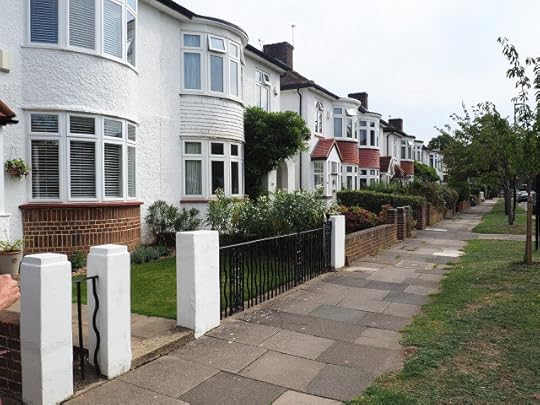
Staveley Road is part of the Chiswick Park Estate, built in the late 1920s and early 1930s. It’s a prime example of a well-to-do suburban street, as are many of the other streets nearby. There are small front gardens, some of them surprisingly exuberant, some showing tropical influence, lots of yuccas and palm trees.
And we saw this one neatly decked out with hardboard. I imagine it didn’t stay like that, but I’m not sure what they were up to.

What sets Staveley Road apart is that it’s where the first German V-2 flying bomb, both a rocket, and a ballistic missile, landed and exploded at about a quarter to seven on September 8th 1944. Thomas Pynchon in Gravity’s Rainbow has the time as 6.43.16 Double British Summer Time, which sounds wonderfully precise, though it may just be the precision of fiction. We know for certain that three people were killed instantly: Rosemary Clarke, Sapper Bernard Browning, and Ada Harrison, whose husband William survived the immediate blast but subsequently died of his injures.
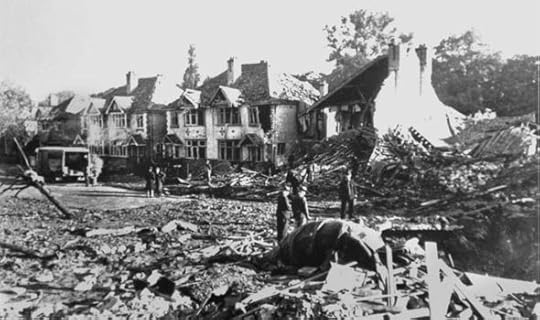
Other bits of information are harder to come by. You can find sources that tell you 19 people were injured, others say it was 11 or 22. Some sources will tell you that 6 houses, or 11 or 18, were completely destroyed and another 6 or 15 or 27 were severely damaged, in some cases so badly that they had to be demolished. The government of the day has at least some responsibility for the lack of clarity, done in the name of keeping up wartime morale. The official story was that a gas main had exploded, though of course the locals knew better. Churchill didn’t even publically acknowledge the existence of the V-2 until he mentioned it in Parliament, in early November.
The truth is, I knew next to nothing about the V-2 before I read Gravity’s Rainbow, a book that has lived with me for a long time now, and I’ve since seen V-2s close up in a museum at the White Sands Missile Range in New Mexico.

I knew there was a monument in Staveley Road, marking that first V-2 attack, but I’d been careful not to over-research it. I didn’t want my field trip simply to confirm what I’d already found and seen online. Given that we were in deepest suburbia, I wasn’t expecting anything very Rococo or avant-garde but I was expecting a little more than I found. The monument looks like this:
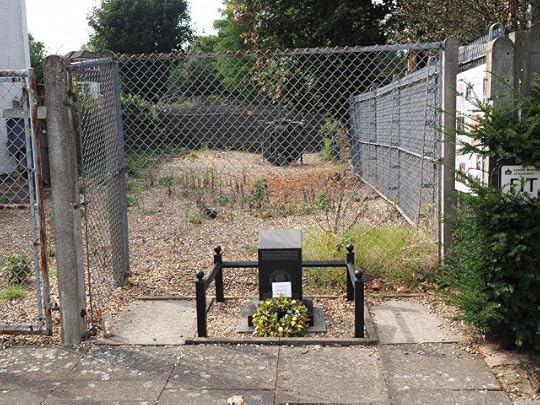
A modest piece then, made more modest still by its siting on a tiny patch of ground in front of a chainlink fence that an electricity substation, with two mysterious mechanical lumps sitting on it. The whole thing originally belongs to Scottish and Southern Electricity, and they donated the tiny patch of land where the memorial stands.
It seemed a bit too modest, but what would I have preferred? A scale model of a V-2? A full size replica? No, I can see the locals wouldn’t want anything like that in a suburban street. But what about something by Tracey Emin? Or perhaps more likely Jake and Dinos Chapman? They could surely have come up something suitable, or at least something that suited me: again the folks of Staveley Road might have thought otherwise.
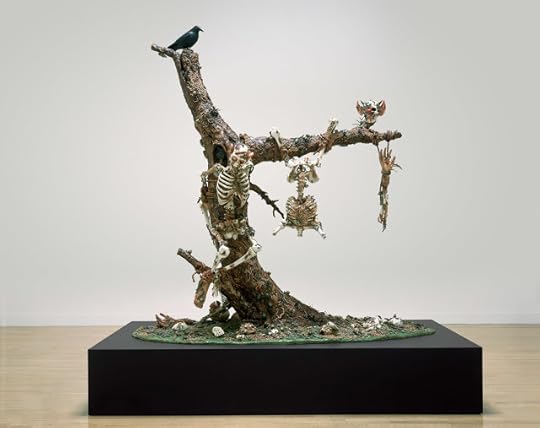
However, thinking about it later, it occurred to me that perhaps the street itself and its continuing existence is a kind of memorial. Clearly it doesn’t look exactly the same as it did in 1944, much less the way it did in 1931, but it can’t be so verydifferent. As so often in the suburbs, it was instructive to look at the older houses and observe how no two of them currently look exactly alike. It’s the usual variations you find in any suburb; new porches, differing paint jobs, the additions of garages, extensions, loft conversions, but here it seems more significant. You’d have a hard time telling which houses date from the original development, and which ones were built or rebuilt after the war as replacements for those bombed and demolished.
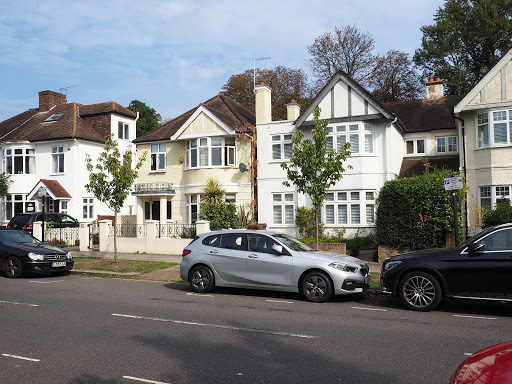
This living memorial of brick and mortar, wood and tile and glass, reveals an endurance, a consistency and stability, a continuation of daily domestic life that persists however much, and however harshly, it has to confront change, decay and destruction. Of course if you were building a suburb today it wouldn’t look like this, this street is not timeless, it’s very definitely of its time, but it doesn’t seem particularly old-fashioned or quaint or retro. Here are elements of suburban life that have in some sense remained constant for the best part of a century.
Jonathan was the ideal companion for this walk because he used to live in the neighbourhood. He was able to direct us to this fabulous ice house in Grove Park, originally on the land belonging to Sutton Court Manor:
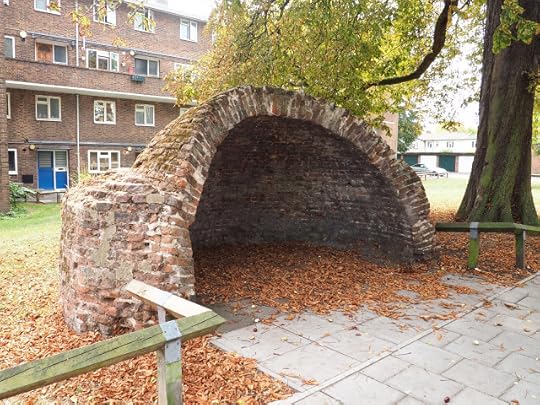
And afterwards we walked on to Chiswick Park and Gardens. If you want obelisks, and we did, then this isn’t a bad place to look. There’s this one:
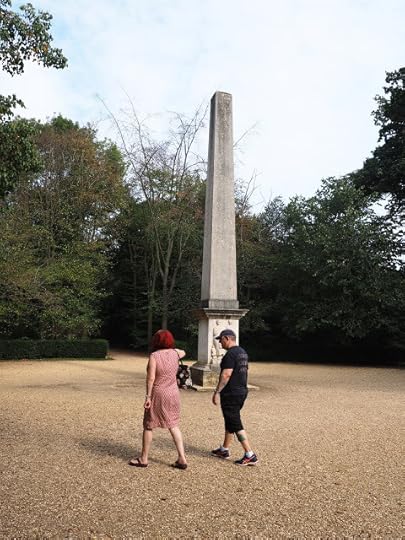
and this one
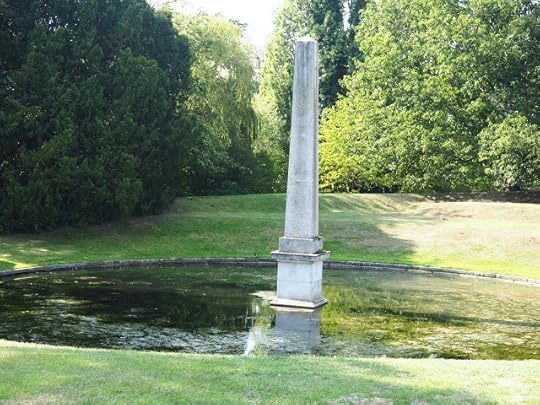
And as we wandered away from the scene of our drift we came to a quite amazing garden, complete with obelisk. It is not exactly what the ancient Egyptians would have recognized as an obelisk, but as a piece of garden decoration it was outstanding.
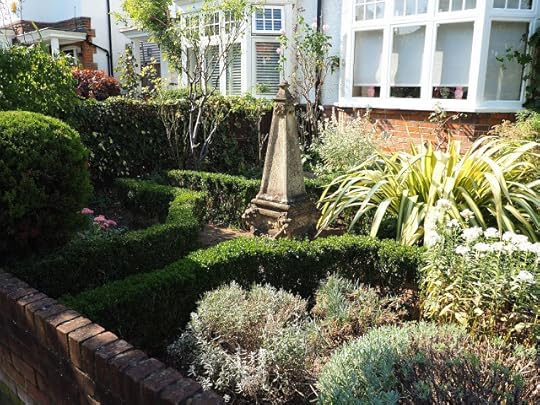

GRAVITY'S SUBURBS
I’ve been working on, and have very nearly finished, a book about Suburbia. Before and between lockdowns I made a few expeditions, you might call them field trips, to various suburbs in England. Most of this material will find its way into the book, but inevitably some of it ended up on the editing room floor. Not being a man to waste effort or words, I thought I’d use a bit of it here, in much edited form.
Here’s a description of a visit I made with my occasional drifting pal Jonathan Taylor to Staveley Road, Chiswick, London, W4,
Now read on:

Staveley Road is part of the Chiswick Park Estate, built in the late 1920s and early 1930s. It’s a prime example of a well-to-do suburban street, as are many of the other streets nearby. There are small front gardens, some of them surprisingly exuberant, some showing tropical influence, lots of yuccas and palm trees.
And we saw this one neatly decked out with hardboard. I imagine it didn’t stay like that, but I’m not sure what they were up to.

What sets Staveley Road apart is that it’s where the first German V-2 flying bomb, both a rocket, and a ballistic missile, landed and exploded at about a quarter to seven on September 8th 1944. Thomas Pynchon in Gravity’s Rainbow has the time as 6.43.16 Double British Summer Time, which sounds wonderfully precise, though it may just be the precision of fiction. We know for certain that three people were killed instantly: Rosemary Clarke, Sapper Bernard Browning, and Ada Harrison, whose husband William survived the immediate blast but subsequently died of his injures.

Other bits of information are harder to come by. You can find sources that tell you 19 people were injured, others say it was 11 or 22. Some sources will tell you that 6 houses, or 11 or 18, were completely destroyed and another 6 or 15 or 27 were severely damaged, in some cases so badly that they had to be demolished. The government of the day has at least some responsibility for the lack of clarity, done in the name of keeping up wartime morale. The official story was that a gas main had exploded, though of course the locals knew better. Churchill didn’t even publically acknowledge the existence of the V-2 until he mentioned it in Parliament, in early November.
The truth is, I knew next to nothing about the V-2 before I read Gravity’s Rainbow, a book that has lived with me for a long time now, and I’ve since seen V-2s close up in a museum at the White Sands Missile Range in New Mexico.

I knew there was a monument in Staveley Road, marking that first V-2 attack, but I’d been careful not to over-research it. I didn’t want my field trip simply to confirm what I’d already found and seen online. Given that we were in deepest suburbia, I wasn’t expecting anything very Rococo or avant-garde but I was expecting a little more than I found. The monument looks like this:

A modest piece then, made more modest still by its siting on a tiny patch of ground in front of a chainlink fence that an electricity substation, with two mysterious mechanical lumps sitting on it. The whole thing originally belongs to Scottish and Southern Electricity, and they donated the tiny patch of land where the memorial stands.
It seemed a bit too modest, but what would I have preferred? A scale model of a V-2? A full size replica? No, I can see the locals wouldn’t want anything like that in a suburban street. But what about something by Tracey Emin? Or perhaps more likely Jake and Dinos Chapman? They could surely have come up something suitable, or at least something that suited me: again the folks of Staveley Road might have thought otherwise.

However, thinking about it later, it occurred to me that perhaps the street itself and its continuing existence is a kind of memorial. Clearly it doesn’t look exactly the same as it did in 1944, much less the way it did in 1931, but it can’t be so verydifferent. As so often in the suburbs, it was instructive to look at the older houses and observe how no two of them currently look exactly alike. It’s the usual variations you find in any suburb; new porches, differing paint jobs, the additions of garages, extensions, loft conversions, but here it seems more significant. You’d have a hard time telling which houses date from the original development, and which ones were built or rebuilt after the war as replacements for those bombed and demolished.

This living memorial of brick and mortar, wood and tile and glass, reveals an endurance, a consistency and stability, a continuation of daily domestic life that persists however much, and however harshly, it has to confront change, decay and destruction. Of course if you were building a suburb today it wouldn’t look like this, this street is not timeless, it’s very definitely of its time, but it doesn’t seem particularly old-fashioned or quaint or retro. Here are elements of suburban life that have in some sense remained constant for the best part of a century.
Jonathan was the ideal companion for this walk because he used to live in the neighbourhood. He was able to direct us to this fabulous ice house in Grove Park, originally on the land belonging to Sutton Court Manor:

And afterwards we walked on to Chiswick Park and Gardens. If you want obelisks, and we did, then this isn’t a bad place to look. There’s this one:

and this one

And as we wandered away from the scene of our drift we came to a quite amazing garden, complete with obelisk. It is not exactly what the ancient Egyptians would have recognized as an obelisk, but as a piece of garden decoration it was outstanding.


February 7, 2021
BALTIC-RELATED FUN
When I lived in California, as I did until comparatively recently, people often said to
me, ‘Oh but you’re English, don’t you miss the seasons?’
And I always said, ‘No I bloody don’t.’
I was born and brought up in Sheffield, which is built on seven hills. The school I went to was two bus rides away from where I lived. The first bus took me down from the heights of Longley, then Gleadless when we moved, into the centre of town where I took another bus up a different, less steep, hill to school.
However bad the snow was, I could usually get to school: it was getting home that was the problem. After school, the bus came down the shortish hill into the centre of town but then I had get had to get up the other, much steeper hill to get home. Because of ice, snow, bad road conditions, and perhaps the occasional disgruntled employee, buses were delayed or canceled and sometimes I had to walk – yes WALK - all the way home. Arguably it turned me into a flaneur but at the time I could have done without it.
By the time I
went to university in the soft south I was more than happy to leave all the snow and all the hassle behind.
And now, after more than a decade and a half in LA, I find myself living in Essex, hardly the frozen wastes, but we are currently experiencing Storm Darcy – the Bitch from the Baltic - and yes we have snow. This does not fill me with joy.
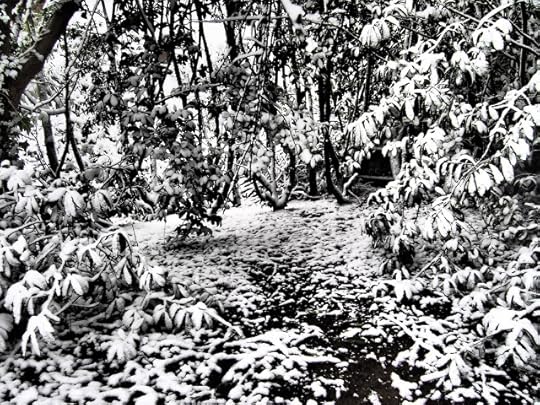
Still, the ground here is fairly level and I don’t have to rely on buses so of course on a snowy Sunday a man, or a woman, has to go out walking. It was OK, really, honestly, not bitterly cold and the snow was still soft and not frozen into ice slicks. I didn’t fall down even once.
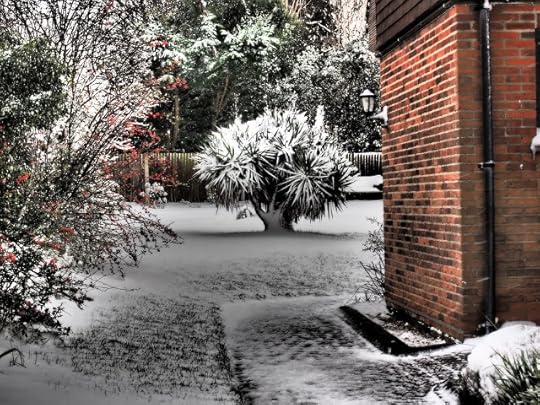
There was a walk to be had, there were pictures to be taken, there was something to write about. This makes many things tolerable. I did what I could.
Do you want to see a picture of me in the snow in California? Of course you do. The photo below was taken in Death Valley, one January. I am on high ground and lightly dressed, the sun is shining, and just a short drive down the hill there is warmth, desert and a not terrible motel.
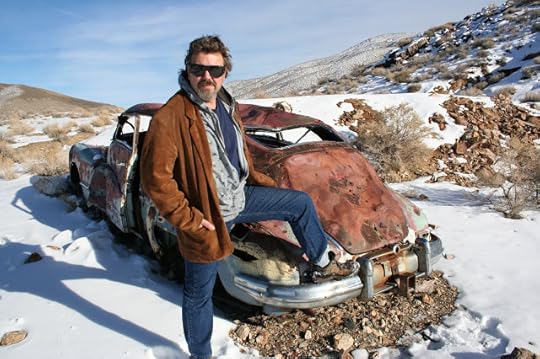
How very different from the home life of our own dear Sheffielders.

Geoff Nicholson's Blog
- Geoff Nicholson's profile
- 55 followers



